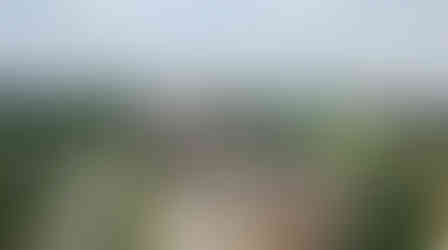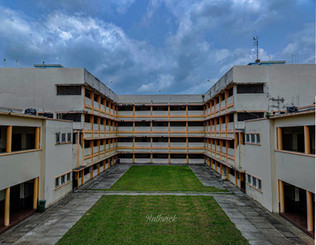DMET: The Cradle of Marine Engineering Excellence in India!
- Gaurav Agrawal & Arun Kishore Eswara

- Aug 16, 2024
- 5 min read

They came from every corner of India—fresh-faced, eager, and full of dreams. From diverse backgrounds, they converged at a revered institution, making it a true microcosm of our great nation. Together, they formed a powerful force that would go on to reshape the world of shipping.
These young aspirants surrendered themselves to the Grand Old Ladies of Taratala and Hay Bunder, where they were transformed into responsible global citizens and maritime ambassadors of a nation with a rich seafaring heritage, dating back to the Indus Valley Civilization.
From 1949 to 2024, a span of 75 years, DMET has undergone significant changes, evolving with the times. The journey has been eventful, marked by challenges and triumphs, as is the case with all great institutions that grow and adapt.

The Beginning
The Directorate of Marine Engineering Training (DMET) was established by the Government of India in October 1948, with operations commencing in Mumbai and Kolkata on August 10, 1949. In Kolkata, the first batch of 30 students began their training at Gorachand Road, Park Circus, while in Mumbai, 20 students started at the hutments opposite the then Victoria Terminus (VT).
For the first three years, these students, known as Apprentices, spent their days in marine workshops and their evenings in classes totaling six hours per week. In the fourth year, they became Cadets, attending full-day classes and laboratories in Kolkata. Upon completing four years, successful students were awarded Certificates.
The present 34-acre campus at P-19 Taratala Road was inaugurated by Prime Minister Nehru on December 14, 1953, accommodating 84 apprentices in the Apprentices Hostel and 80 Cadets in the Cadets Hostel.

Metamorphosis
The intake of students increased from 50 to 100 per year in 1963/64. The first batch of Graduate Marine Engineers (GME) joined in 1975, with 40 students each in Mumbai and Kolkata. In 1976, the program continued in Mumbai. However, there were no intakes for the Four-Year course in 1975 and 1980, resulting in no batch graduating from Kolkata in 1979 and 1984.
The first batches to complete all four years at Kolkata were from 1978-82, 1979-83, 1981-85, and 1982-86. The annual intake increased from 100 to 120 in 1981.
The first foreign cadet to train at DMET was Cdt GACV Sniveerathana (Roll No. 2576) from Sri Lanka, who joined the 1978-82 batch but did not complete the course. The first regular foreign cadets to complete their training were 10 Iranians who joined the 1981-85 batch. The course at DMET was recognized as equivalent to a Bachelor's Degree in Marine Engineering in 1983.
Over the years, DMET continued to evolve, installing its first main engine simulator in Kolkata in 1984 and introducing various batches of GME courses sponsored by the Shipping Corporation of India (SCI) from 1989 onwards. DMET was renamed the Marine Engineering Research Institute (MERI) in 1993. The first Lady cadet joined DMET Kolkata in 1995, and by 2004, the first two Lady cadets joined the GME course at DMET Mumbai.
By 2000, the swimming pool at the Kolkata campus was finally commissioned, and DMET graduates began receiving a Degree in Marine Engineering from Jadavpur University from 2003 to 2012.
In 2008, the Indian Maritime University (IMU) was established by an act of Parliament, further integrating DMET into the broader maritime education framework.

Today
Today, DMET Calcutta is the IMU Kolkata Campus, which also includes the Indian Institute of Port Management (IIPM), Kolkata. The campus offers a fully-fledged Four-Year BTech (Marine) course and an MTech course. The four-year course in Kolkata is the oldest surviving Marine Engineering course in the country and possibly in Asia.
Successful graduates from both Kolkata and Mumbai Port campuses receive a BTech degree in Marine Engineering from the IMU. The IMU Mumbai Port Campus, which includes LBS Nautical College, offers a Four-Year BTech (Marine) course and a One-Year PGDME, along with post-sea courses at LBS Nautical College.
Today, the BTech (Marine) program has a strength of around 280 students per year at Kolkata and 40 at Mumbai, a significant increase from the initial intake of 50 per year. The Kolkata Campus has been declared a Centre of Excellence for Marine Engineering under the Maritime Vision 2030.
The campuses are equipped with modern auditoriums, new hostels to accommodate the increased intake, state-of-the-art simulators, and other training equipment, laboratories, and workshops.
August 10, 2024, and Beyond
They will continue to come from all over India—fresh-faced and eager, from all walks of life, to become responsible global citizens and maritime ambassadors of the nation. They will come to Kolkata—700 088, the best pin code on Earth. They will come to P-19 Taratala Road, the most recognized address in the maritime world. They will come to the Cradle of Marine Engineering in India because, no matter what name it goes by, the spirit of DMET is eternal and everlasting.
The World is indeed our Oyster.
Interesting Tidbits About DMET
Did You Know?
There was a small airstrip on the eastern boundary of the Kolkata campus, stretching from the campus boundary to the India Mint. It served as a United States Air Base during World War II.
The prestigious President’s Gold Medal (PGM) was originally conceptualized as a medal from the President’s office, with an order issued to Alipore Mint. A medal with gold filling is made by Alipore Mint on order and awarded to the winner. It is now a thing of the past.
The famous grill fence along Taratala Road now rests inside a fully cast-over concrete wall with a 6-foot raised noise barrier, installed in 2018. So, no more jumping over the fence. Protective grills have been installed in all previously open verandahs and corridors.
The Kolkata Campus has its own deity, Kala Bhairava, who is its protector. The temple is located at the end of the road leading from the residential gate.
In 1992, a 240-seater hostel was built behind the Apprentice Hostel/Junior Hostel. An 800-seater auditorium was constructed next to the Junior Hostel in 2005. A 340-seater hostel was added in 2018, and a 360-seater hostel in 2022. A new Academic Block was built in place of the tennis court and the small ground adjacent to it.
Marinofest/Cacophony continues in various forms like Tempest in Kolkata. The festival at Mumbai is called Prayaan. We still participate in the local hockey league in Kolkata.
DMET Samvaad was initiated during the COVID-19 pandemic in 2020 as a platform to bring together current cadets, alumni, and college authorities. Distinguished alumni are invited to speak on topical issues and motivate cadets to aim high. Feedback from shipping leaders is shared on the expectations of shipping companies from new recruits.








































